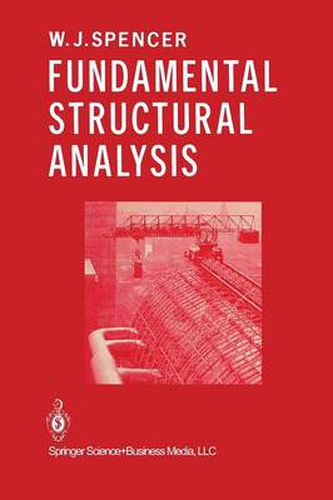Readings Newsletter
Become a Readings Member to make your shopping experience even easier.
Sign in or sign up for free!
You’re not far away from qualifying for FREE standard shipping within Australia
You’ve qualified for FREE standard shipping within Australia
The cart is loading…






This title is printed to order. This book may have been self-published. If so, we cannot guarantee the quality of the content. In the main most books will have gone through the editing process however some may not. We therefore suggest that you be aware of this before ordering this book. If in doubt check either the author or publisher’s details as we are unable to accept any returns unless they are faulty. Please contact us if you have any questions.
Significant changes have occurred in the approach to structural analysis over the last twenty years. These changes have been brought about by a more general understanding of the nature of the problem and the develop ment of the digital computer. Almost all s~ructural engineering offices throughout the world would now have access to some form of digital computer, ranging from hand-held programmable calculators through to the largest machines available. Powerful microcomputers are also widely available and many engineers and students have personal computers as a general aid to their work. Problems in structural analysis have now been formulated in such a way that the solution is available through the use of the computer, largely by what is known as matrix methods of structural analysis. It is interesting to note that such methods do not put forward new theories in structural analysis, rather they are a restatement of classical theory in a manner that can be directly related to the computer. This book begins with the premise that most structural analysis will be done on a computer. This is not to say that a fundamental understanding of structural behaviour is not presented or that only computer-based tech niques are given. Indeed, the reverse is true. Understanding structural behaviour is an underlying theme and many solution techniques suitable for hand computation, such as moment distribution, are retained. The most widely used method of computer-based structural analysis is the matrix stiffness method.
$9.00 standard shipping within Australia
FREE standard shipping within Australia for orders over $100.00
Express & International shipping calculated at checkout
This title is printed to order. This book may have been self-published. If so, we cannot guarantee the quality of the content. In the main most books will have gone through the editing process however some may not. We therefore suggest that you be aware of this before ordering this book. If in doubt check either the author or publisher’s details as we are unable to accept any returns unless they are faulty. Please contact us if you have any questions.
Significant changes have occurred in the approach to structural analysis over the last twenty years. These changes have been brought about by a more general understanding of the nature of the problem and the develop ment of the digital computer. Almost all s~ructural engineering offices throughout the world would now have access to some form of digital computer, ranging from hand-held programmable calculators through to the largest machines available. Powerful microcomputers are also widely available and many engineers and students have personal computers as a general aid to their work. Problems in structural analysis have now been formulated in such a way that the solution is available through the use of the computer, largely by what is known as matrix methods of structural analysis. It is interesting to note that such methods do not put forward new theories in structural analysis, rather they are a restatement of classical theory in a manner that can be directly related to the computer. This book begins with the premise that most structural analysis will be done on a computer. This is not to say that a fundamental understanding of structural behaviour is not presented or that only computer-based tech niques are given. Indeed, the reverse is true. Understanding structural behaviour is an underlying theme and many solution techniques suitable for hand computation, such as moment distribution, are retained. The most widely used method of computer-based structural analysis is the matrix stiffness method.